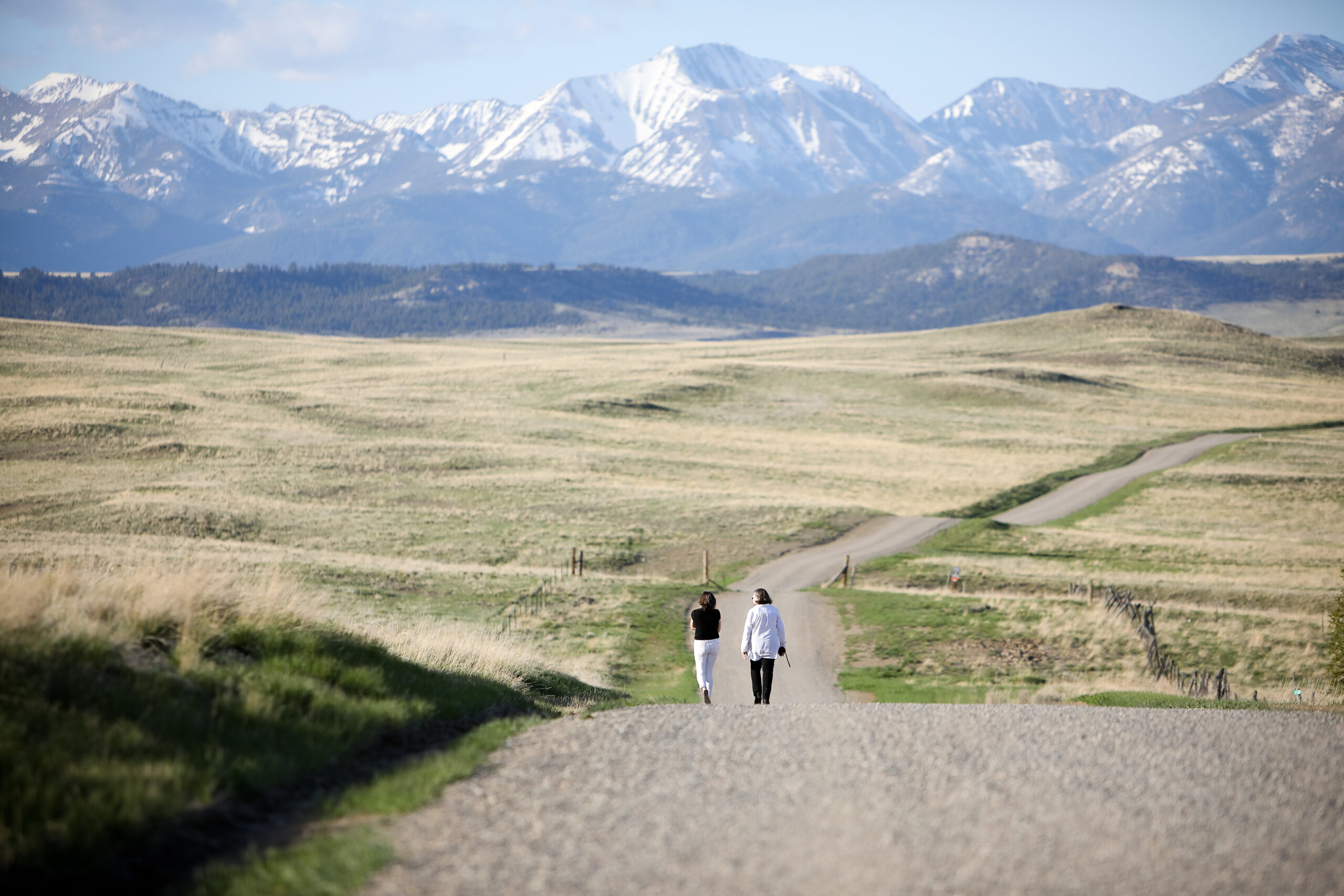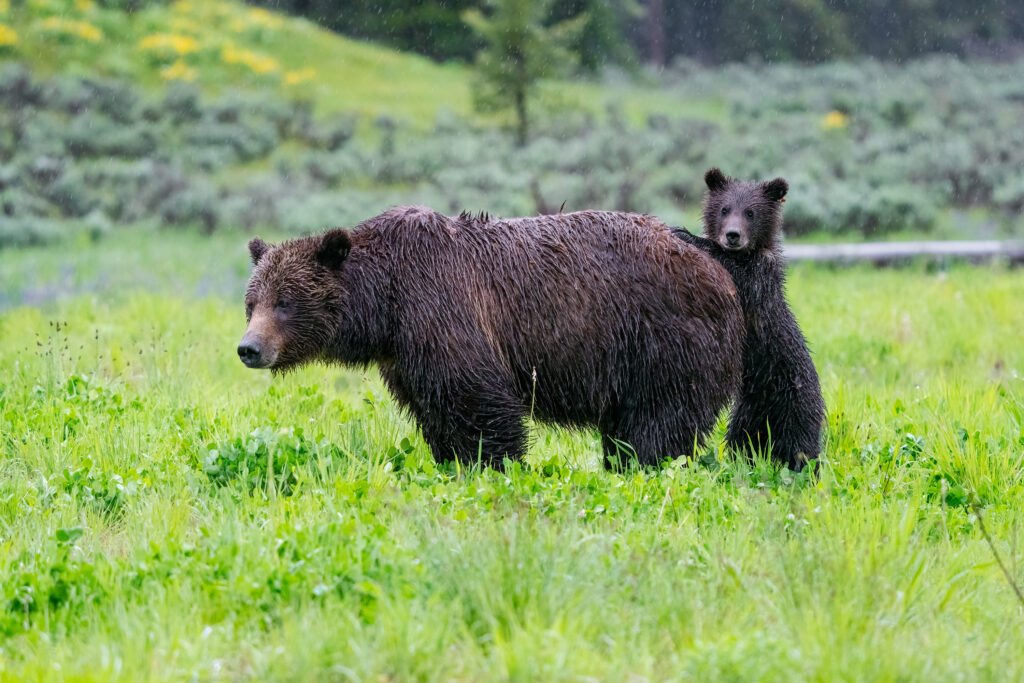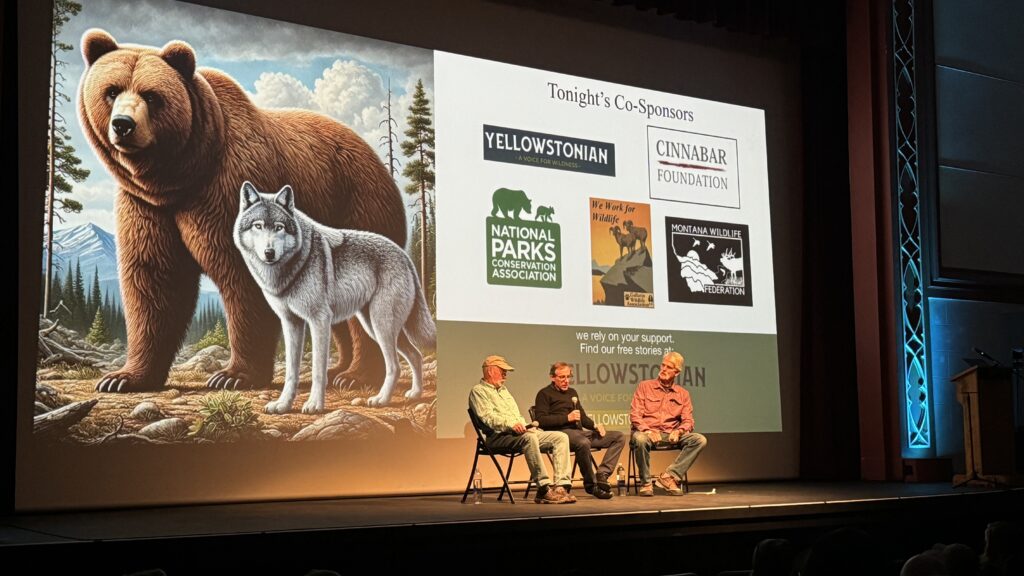EDITOR’S NOTE: Make sure you read our interview below with Gavin Clark, executive director of the Park County Community Foundation about its Give-a-Hoot festivities happening throughout the month of July and Clark’s thoughts on what makes Park County a standout in the Northern Rockies.
by Todd Wilkinson
What makes for a great smalltown community? The word gets tossed around a lot these days as an aspiration and amorphously, perhaps because the real sense of it has become so fleeting.
In real communities, neighbors know each other, citizens care about one another even if they don’t always agree. They greet the birth announcements of new babies published in local newspapers and share in the joy of their parents. When an obituary appears, there is a collective sense of loss and sadness.
In such places, there is meaning knowing that citizen acts carried out selflessly for the betterment of the community really do still supersede individual desires to engage in actions that only benefit themselves.
In these times, amid so many turbulent forms of change, it’s enormously difficult to hold community values and those drawn to them together. One place where you can still find it, and it doesn’t take much work to see expressions of it, is in Park County, Montana.
Here, community extends across 2,800 square miles and is all about strands of social interconnection. As Gavin Clark says, there’s an even bigger force at work than volume of terrain: Everyone is valued for what they can give back to the community, no matter how big or small their contribution. What this has produced is a special pride of ownership in belonging to something bigger than oneself.
Historically the gateway to Yellowstone, the lands encompassed by Park County hold breathtaking topography where the wind blows hard in winter but it’s where social bonds make people proud that others know their name.
Clark, executive director of the Park County Community Foundation, says one part of the superstructure holding Park County together is an interwoven web of non-profit organizations. Without fanfare, groups do what governments and private individuals alone cannot. Remove them, he says, and Park County would be a very different and much lesser place. (In truth, citizens in all of Greater Yellowstone’s 20 counties savor their extended friendships, cultivated through real social interaction that transcend boundaries and ideologies).
With the Park County Community Foundation commencing its annual Give-a-Hoot fundraising drive that lasts throughout the month of July, it represents the main opportunity for high-minded citizens to support their favorite charity organizations and causes. Without it, some groups couldn’t survive. Recently, Yellowstonian, which is participating as a special project of Livingston-based nonprofit Artemis Institute, sat down with Clark to have a short conversation we know you will find inspirational.
Yellowstonian is participating in Give-A-Hoot. You can support our conservation journalism, focused on protecting wildlife and wildlands of the Greater Yellowstone Ecosystem by clicking here through the end of July. As a special project of Livingston-based Artemis Institute, any donation made to Artemis goes directly to Yellowstonian and will help enhance our capabilities to deliver more stories about topics that matter to you. And we have some great incentive thank yous for gifts over $100.
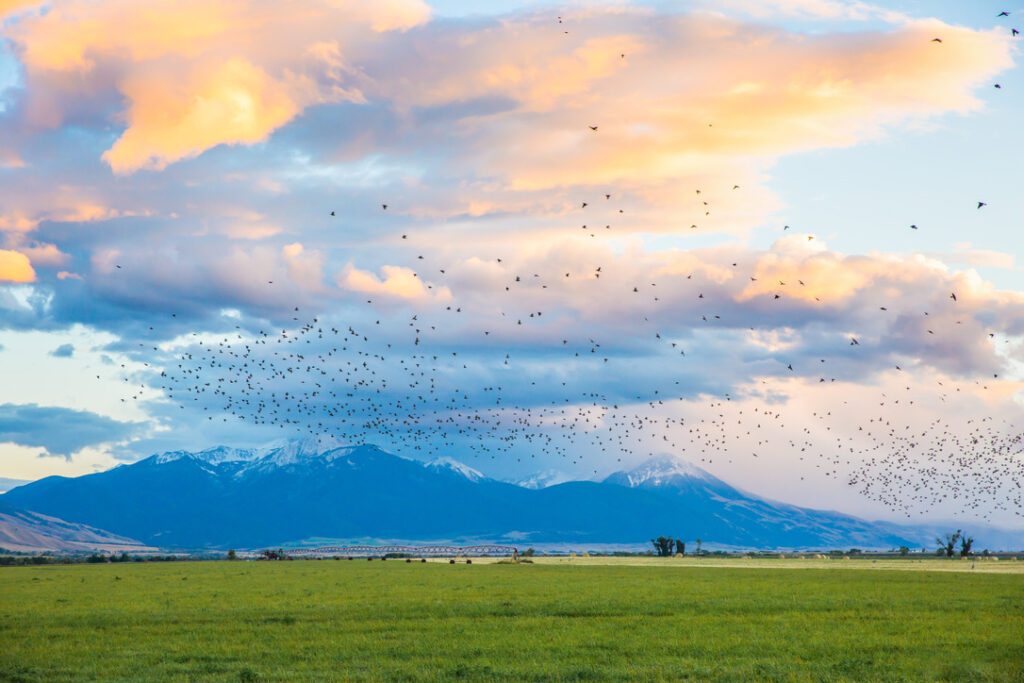
Todd Wilkinson for Yellowstonian: There’s something about the spirit of Park County that has its own kind of gravitational force. What is it?
GAVIN CLARK: I tell this story a lot because I think it really highlights that gravitational force and the novel spirit of Park County. A lot of this isn’t unlike most places in Montana, but I feel like it’s amplified in Park County, and it’s just the spirit of neighbors helping neighbors.
We live here in a very rural, wild area compared to other places. There’s a reason why we need each other. The first national park was founded here in this ecosystem. It’s remote and there’s not a lot of people here relatively speaking. This forces people to take care of each other. If you’re having a beer in the Murray [Bar] and you get into an argument with someone, you might then get stuck in the ditch on your way home but that same person may be the one who pulls you out. This is the kind of spirit that permeates through people and it’s what attracts people to want to be here.
Most of us adults were not born here but we feel a reason for being here. In fact, Park County has always been a crossroad on the landscape. There’s a long history of indigenous folks coming to this area, somewhere around 27 different tribes across time, that shared resources to support each other when they were here or passed through. That spirit lives on into today. We have a lively community of artists and service workers, trade professionals and people employed by nonprofits, retirees outdoor-oriented people in journalism and conservation and, in the whole gamut, we can’t be here unless we support each other when we need help and advice. That doesn’t mean we can’t disagree with each other, and, believe me, that happens often, but at the end of the day we are here for each other and that’s what makes a better life possible.
YELLOWSTONIAN: Give-a-Hoot is an example of diverse interests coming together in community building, with participating groups and supporters recognizing how living in a great place is really the sum of its parts. What inspires you most about what Give-a-Hoot does?
CLARK: Wow, that’s a loaded question. I truly believe that Give-a-Hoot does two really succinct things. The first is that it provides our nonprofit community the resources they need to continue to support the people who live in Park County and the causes that matter to them. This extends to our wildlife and to those protecting and stewarding our open spaces and looking out for the natural world. At its core, nonprofits are the cornerstone of Park County. Montana is not a state where government is really geared toward delivering a lot of social services. People firmly believe individuals can make decisions without the government but as individuals we need each other. Ironically, this gives people an opportunity and impetus to support our nonprofits in a way that they wouldn’t otherwise do
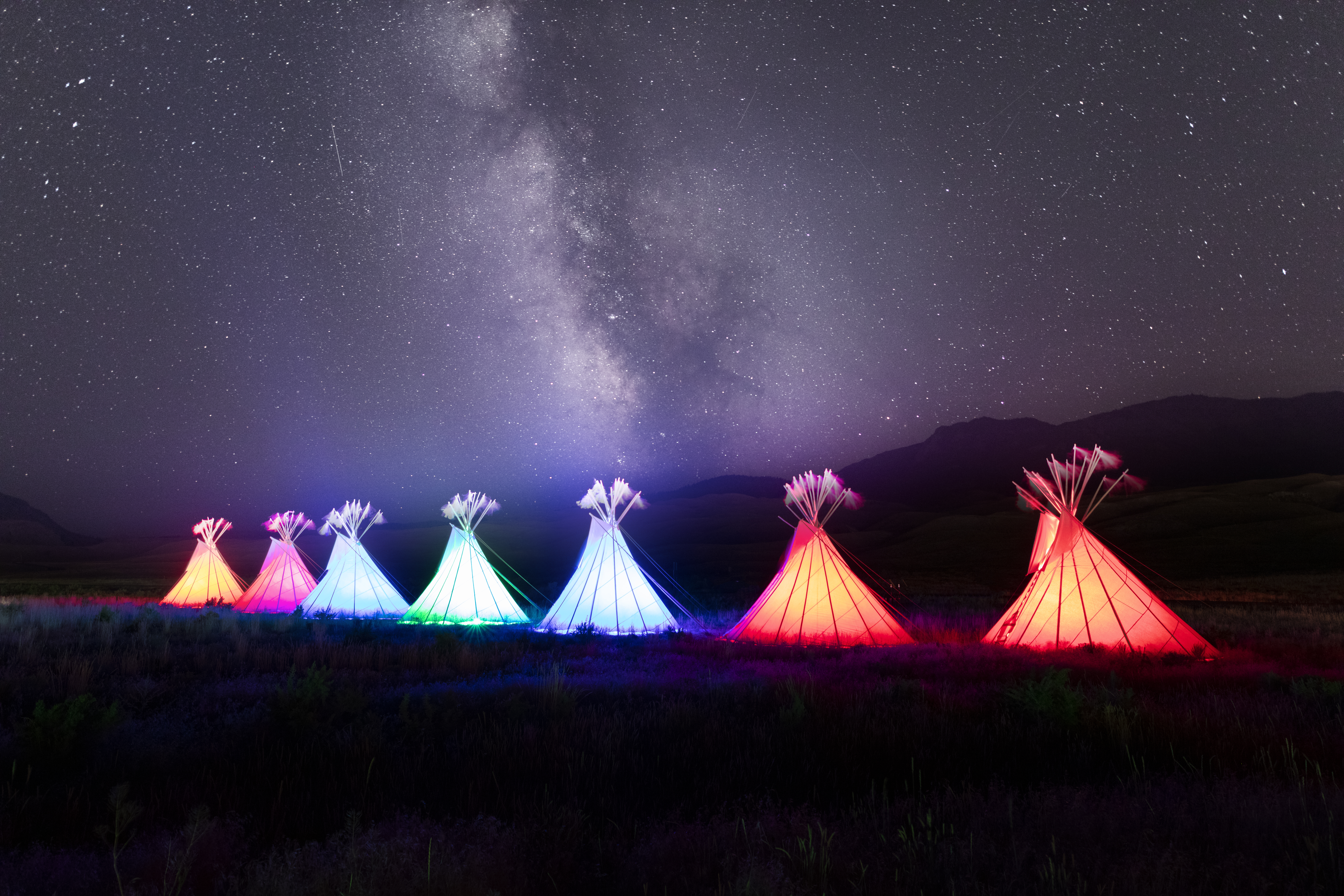
YELLOWSTONIAN: The role of nonprofits seems more important than ever, yes?
CLARK: It’s no surprise to anyone that huge financial forces are coming into Park County and property is being acquired and that influx is having ripple effects. As housing prices rise, it’s become much more expensive for locals to live in Park County, and this has only amplified the need for a well-funded and high-capacity nonprofit sector. Give-a-Hoot is really a fun celebration of our non-profit sector. It’s not just about raising money; it’s about praising and highlighting the work that nonprofits do year round for 12 months, 365 days, nonstop. They are working hard to keep our county livable for everyone. I should hasten to add that nonprofits are hardly the only ones that serve our residents. We have a beautiful mosaic of engaged residents, community-minded business owners and local governments that complement the work of nonprofits. Each is important and, combined, we’re strong.
YELLOWSTONIAN: The Park County Community Foundation is involved in an ongoing community visioning exercise that invites citizens to take part in surveys focused on five different areas related to quality of life. They are Landscapes and Natural Amenities; Small Town and Rural Lifestyle; Economic Performance; Housing and Affordability; and Health Safety and Education.
This initiative, “We Will Park County,” has attracted a lot of attention in the Northern Rockies. It is a novel and works across a range of value sets central to the identity of Park County residents all related to the strong sense of place. What could other communities learn from this special initiative you launched?
CLARK: That’s a great question, and we actually were just on the phone with the Whitefish Community Foundation exploring our different business models and programmatic initiatives. Whitefish as a mountain county is facing many of the same challenges we are. “We Will,” to me, is everything that the Community Foundation represents. When I say that, it really comes down to merging public perception with data. In this day and age, people are skeptical about data. They’re skeptical about facts, and they pick and choose. Oftentimes, it takes an entity that can shine a light on what the data actually is. It’s also about honestly assessing the perceptions of the community and how those perceptions either are aligned or misaligned with the facts and the data. I think communities can learn from “We Will.”
In a nutshell, “We Will” tries to bring a holistic voice to the issues we face. We’re not saying that everybody holds the same values or belief system. We’re not saying that this is how everybody thinks. There is, in fact, a lot of noise out there. We’re giving a voice to people, including those who might feel like they don’t have a voice or feel left behind as we grow fast and change as a community.
YELLOWSTONIAN: What’s impressive is not only the annual “We Will” assessment you produce about community values and the community forums that follow, but the fact they were so well attended. People really turn, young and old, those who operate distant farms and ranches, residents of Gardiner, Paradise Valley, the Shields Valley and Livingston. In your public forums you can feel the yearning they have to belong to something bigger than themselves.

CLARK: Absolutely. Our community is incredible and its engaged. People have a desire to come together. The Community Foundation is there to be a neutral convener, where there’s trust, people feel like they have a seat at the table, and they’re being heard. They don’t want to fight or argue. They simply want to move forward and find solutions to make our community better. I think “We Will” is an important piece of that. It’s not the answer or a silver bullet by any means. It’s our attempt to cut through the divisive culture that we find ourselves living in. I firmly believe that if you bring together people and honor the faith in values, they all share, we can find solutions that will work.
YELLOWSTONIAN: America has been called one of the most generous countries in the world where private citizens step up to support philanthropic causes. Summertime brings feelings of euphoria to Park County denizens and millions passing through on their way to Yellowstone. Why is supporting local groups here so important?
CLARK: Locals supporting locals is central to the spirit of Give-a-Hoot but it’s much bigger than that, as is the sense of community many feel. Seasonal residents who are here for the summer have an opportunity to support the things they value which is present in the local non-profit groups advocating for them. You also have millions of people passing through on their way to Yellowstone and who fall in love with Park County along the way. This is their opportunity to give back to a place that has left a positive impression on their lives.
A lot of people who moved here after they retired say they drove through Park County with their parents when they were young and the visuals stayed with them. It’s not just the scenery, the wildlife or the public lands. What they remember most were the local people.
Gavin Clark, executive director, Park County Community Foundation
YELLOWSTONIAN: Even if people don’t live in Park County, they feel protective of it and, as you’ve said before, they can play an important role.
CLARK: I didn’t really experience this so obviously until the flood of 2022. People from across the country and around the world remembered this place. Park County was hugely affected when the Yellowstone River overflowed its banks, causing severe flooding, taking out the main north entrance road to Yellowstone Park, causing lots of damage throughout the county and economic hardship to the Yellowstone’s main gateway town of Gardiner and other towns. People saw images on the news like when the home in Gardiner fell into the Yellowstone River. They wanted to help.
We started the Southwest Montana Flood Relief Fund and people were inspired to support the relief effort. There’s a reason why they care so deeply about this place. Many people every year drive from Livingston to Yellowstone through Park County. They’re coming from big cities, or countries around the world. That physical drive single handedly shapes peoples’ perspective on what life actually is in Park County and what life could be. A lot of people who moved here after they retired say they drove through with their parents when they were young kids and the visuals of what they saw stayed with them. But it’s not just because of the vistas or because of the river or because they experienced wildlife and millions of acres of public and in the national park and national forest.
What they remember were the people who were here, and they wanted to help them heal from the trauma. That’s why they opened up for wallets and said, “People in Park County are struggling in a place we love, and we need to help them.” The relief effort couldn’t have happened if it had been led by a large national aid organization. Those with big hearts wanted to help the local people they remember, those who helped them catch their first fish on a fly or the folks they saw when they went on their first horseback ride or were so friendly to them in downtown Livingston. I think the level of goodwill we have here not only inspires people to give back to Park County, but it inspires them to go back to their home communities and try to support the same kind of feeling where they live.
YELLOWSTONIAN: You’ve spoken before about how the roles of nonprofits here are fluid rather than rigid.
CLARK: The Park County Environmental Council, in my view, is a great example. They became volunteer organizers around the entire flood relief effort and that’s because they’re really good at grassroots organizing. They didn’t start the year thinking, “All right, well, we’re gonna have to carve out four staff to deal with a flood.” But when the disaster happened, they jumped into it as did other groups, but they took the lead. They did it on top of everything else because that’s what locals do. Locals support each other and that’s why it is so important to give to local groups. They aren’t daunted by challenges , they possess, and value local knowhow and they take on tasks that outside entities don’t want to do.
YELLOWSTONIAN: What are a few of the things as a community leader that bring tears to your eyes?
CLARK: I’m a crier so this is an easy one. It’s all about having a tangible love for the community and you know it when you feel it. Whether it’s a check being written or a volunteer going out and spending hours with the food resource center feeding the elderly and struggling families or non-profit professionals teaching out kids in after-school programs, it really comes down to a genuine love for this place. One of the best things about living in our county, for me, is how people rise up to make difference. There are the people who volunteer, who serve on a nonprofit board, been elected to office, run for the school board, help clean up the river or plate food at a Christmas dinner. They do this without seeking individual praise or recognition. Their motivation is that they feel good when others feel good and examples of this are endless.
It’s not a mystery of what motivates them. Every single person has a love for this place. It’s what makes us unique and resilient and the good feelings that people have by giving back only inspires more of it, again and again. I’m raising my kids here on the banks of the Yellowstone River. We moved here 10 years ago from Colfax Boulevard in the middle of Denver. Those kids have no idea how lucky they are to be growing up in this place, not because of the river, and not because of the vistas or the park, but because of the people who live here. They’re going to take this feeling of community with them wherever they go. I hope they don’t move away but if they do, they’re take this sense of belonging to their community, and they’ll know what’s possible as they try to make it a great place to live.
EDITOR’S NOTE: Enjoy the short video below or give a hoot yourself by clicking here. If you enjoyed this story, please consider making a gift to Yellowstonian and its parent non-profit Artemis Institute. Profound thanks!

